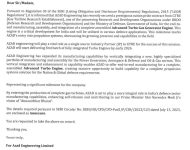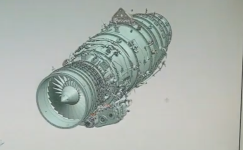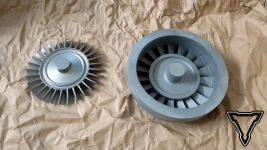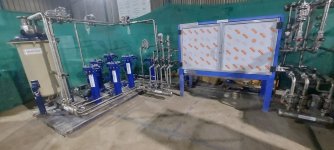You are using an out of date browser. It may not display this or other websites correctly.
You should upgrade or use an alternative browser.
You should upgrade or use an alternative browser.
By certification does he mean ready for production or ready for flight trials.
It's been a decade since the program started and we are yet to see it fly even on a testbed


What is the hurry? Its a internally funded side project for them.By certification does he mean ready for production or ready for flight trials.
It's been a decade since the program started and we are yet to see it fly even on a testbed
GTRE STFE engine mobile test facility control cabin (video from company)
View attachment xtVZtq_NRObCHUyw.mp4
View attachment xtVZtq_NRObCHUyw.mp4
Nice, The container-based test facilities will help to make tests in different altitudes and climate zones, like Ladakh or Rajasthan.GTRE STFE engine mobile test facility control cabin (video from company)
Its for an expendable engine , so probably at the test ranges first ? also only DRDO to use it, not sure if the user group too.Nice, The container-based test facilities will help to make tests in different altitudes and climate zones, like Ladakh or Rajasthan.
Mobile Test Facility for Aircraft Engines#defence #neometrix#drdo
The proposed Mobile Test Facility Control Cabin System is a roadworthy self-sufficient test facility for testing of “Expandable Turbo Propulsion system (Expandable Engines) of up to 450kgf class”.
The company also makes some missile loading items too among other stuff. CM Transportation Modules
I have asked DRDO to explore what kind of engines can be made in India and what countries are ready to transfer the technology, as we want to make engines in India now. We want to make India an exporter country for engines... - Union Defence Minister Rajnath Singh
Lincoln:"You can fool some of the people all of the time, and all of the people some of the time, but you can not fool all of the people all of the time"
Le DRDO:" you can fool all of the people all of the time, if you are an Indian "
Bloody hell,they screwed Tejas with kaveri jet engine. And still wanna develop 130 kn engine ,so that they can screw AMCA.
Sometimes it can be difficult to determine whether you are trolling or genuinely unintelligent.Lincoln:"You can fool some of the people all of the time, and all of the people some of the time, but you can not fool all of the people all of the time"
Le DRDO:" you can fool all of the people all of the time, if you are an Indian "
Bloody hell,they screwed Tejas with kaveri jet engine. And still wanna develop 130 kn engine ,so that they can screw AMCA.
It is just a test facility under construction, which will be used for all aero engine development. 130kN is the designed upper limit of the test facility. No one is claiming that they are developing a new 130kN engine. Kaveri failed because of lack of such facilities.
Midhani delivers Nickle based super alloy for mig29 engines....


Video of the above HTFE-25 test rig
Some other videos of mobile testing of aero engines
Some other videos of mobile testing of aero engines
Big news @Ashwin @Gautam @Rajput Lion @Fatalis
Azad Engineering secures a prestigious contract from GTRE under DRDO and Ministry of Defence to manufacture the cutting-edge Advanced Turbo Gas Generator Engine.
Full disclosure: https://nsearchives.nseindia.com/corporate/AZAD_23052024130747_CS_SD.pdf
Role: Single-source Industry Partner to GTRE
First Deliveries: Early 2026
Capabilities: Expanded manufacturing for Power Gen, Aerospace, Defence, Oil & Gas sectors.

Azad Engineering secures a prestigious contract from GTRE under DRDO and Ministry of Defence to manufacture the cutting-edge Advanced Turbo Gas Generator Engine.
Full disclosure: https://nsearchives.nseindia.com/corporate/AZAD_23052024130747_CS_SD.pdf
Role: Single-source Industry Partner to GTRE
First Deliveries: Early 2026
Capabilities: Expanded manufacturing for Power Gen, Aerospace, Defence, Oil & Gas sectors.














